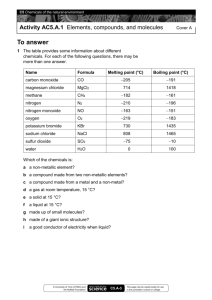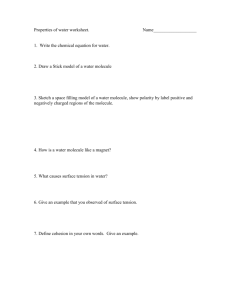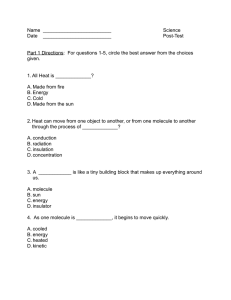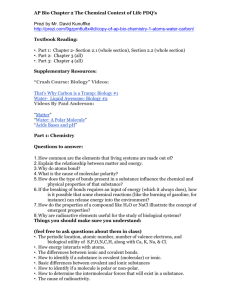Gas Velocities
advertisement
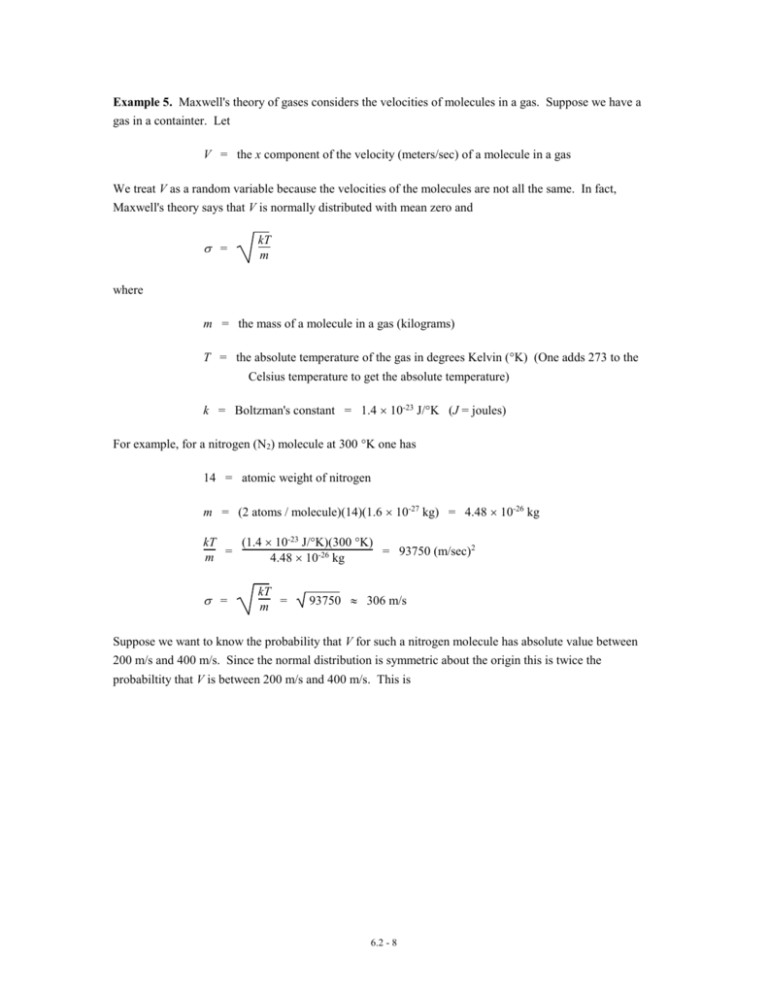
Example 5. Maxwell's theory of gases considers the velocities of molecules in a gas. Suppose we have a gas in a containter. Let V = the x component of the velocity (meters/sec) of a molecule in a gas We treat V as a random variable because the velocities of the molecules are not all the same. In fact, Maxwell's theory says that V is normally distributed with mean zero and = kT m where m = the mass of a molecule in a gas (kilograms) T = the absolute temperature of the gas in degrees Kelvin (K) (One adds 273 to the Celsius temperature to get the absolute temperature) k = Boltzman's constant = 1.4 10-23 J/K (J = joules) For example, for a nitrogen (N2) molecule at 300 K one has 14 = atomic weight of nitrogen m = (2 atoms / molecule)(14)(1.6 10-27 kg) = 4.48 10-26 kg kT (1.4 10-23 J/K)(300 K) = = 93750 (m/sec)2 m 4.48 10-26 kg = kT = m 93750 306 m/s Suppose we want to know the probability that V for such a nitrogen molecule has absolute value between 200 m/s and 400 m/s. Since the normal distribution is symmetric about the origin this is twice the probabiltity that V is between 200 m/s and 400 m/s. This is 6.2 - 8
